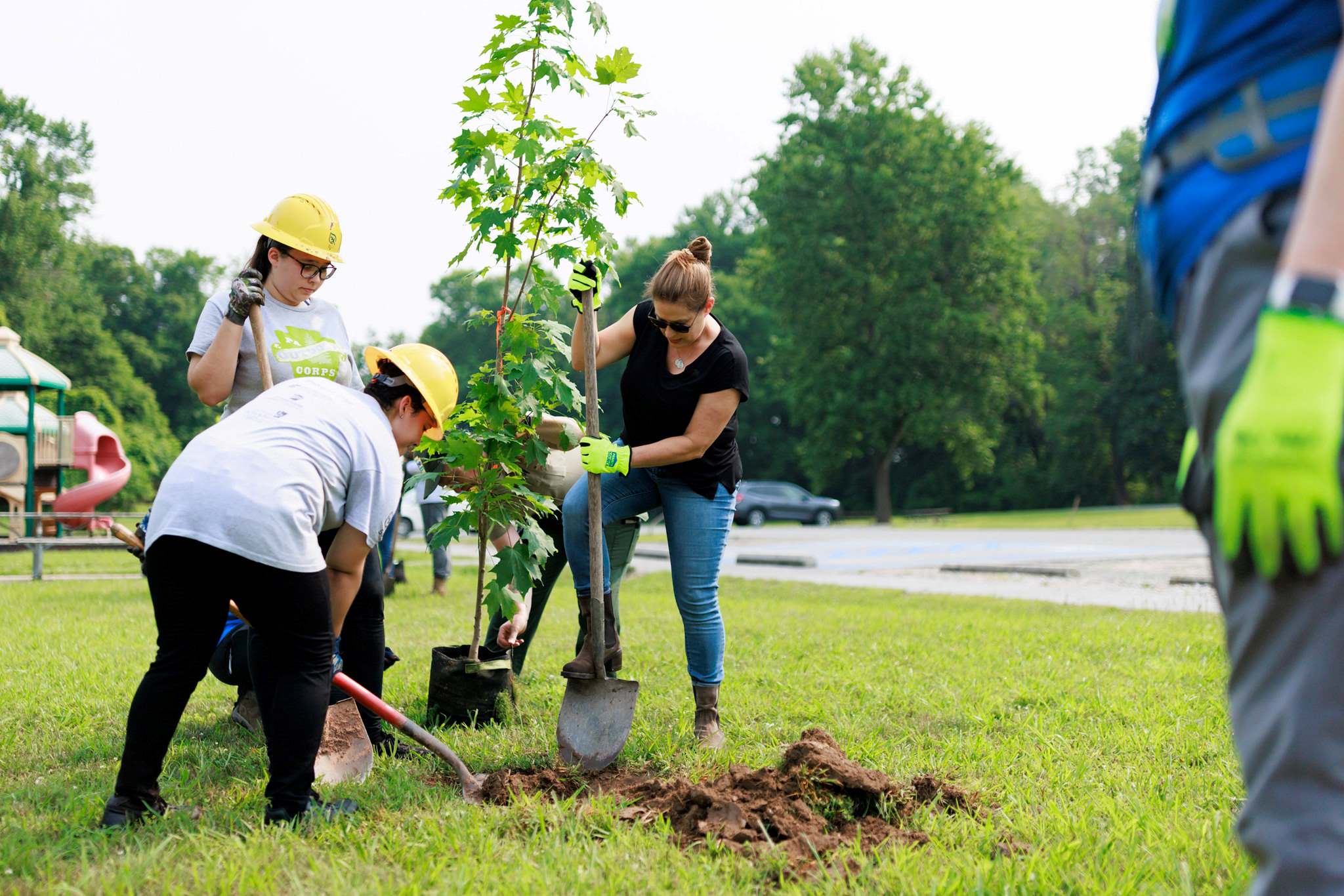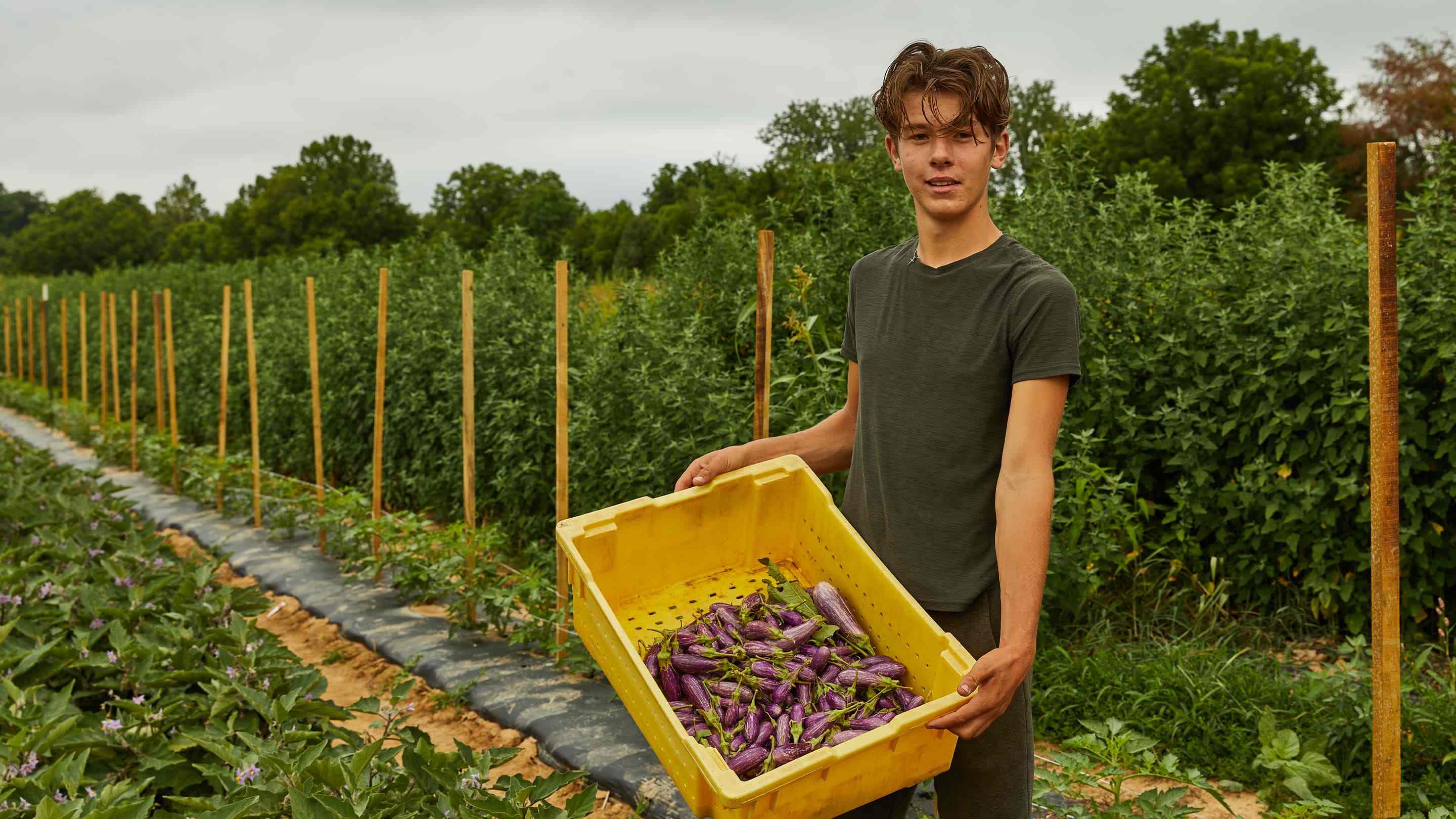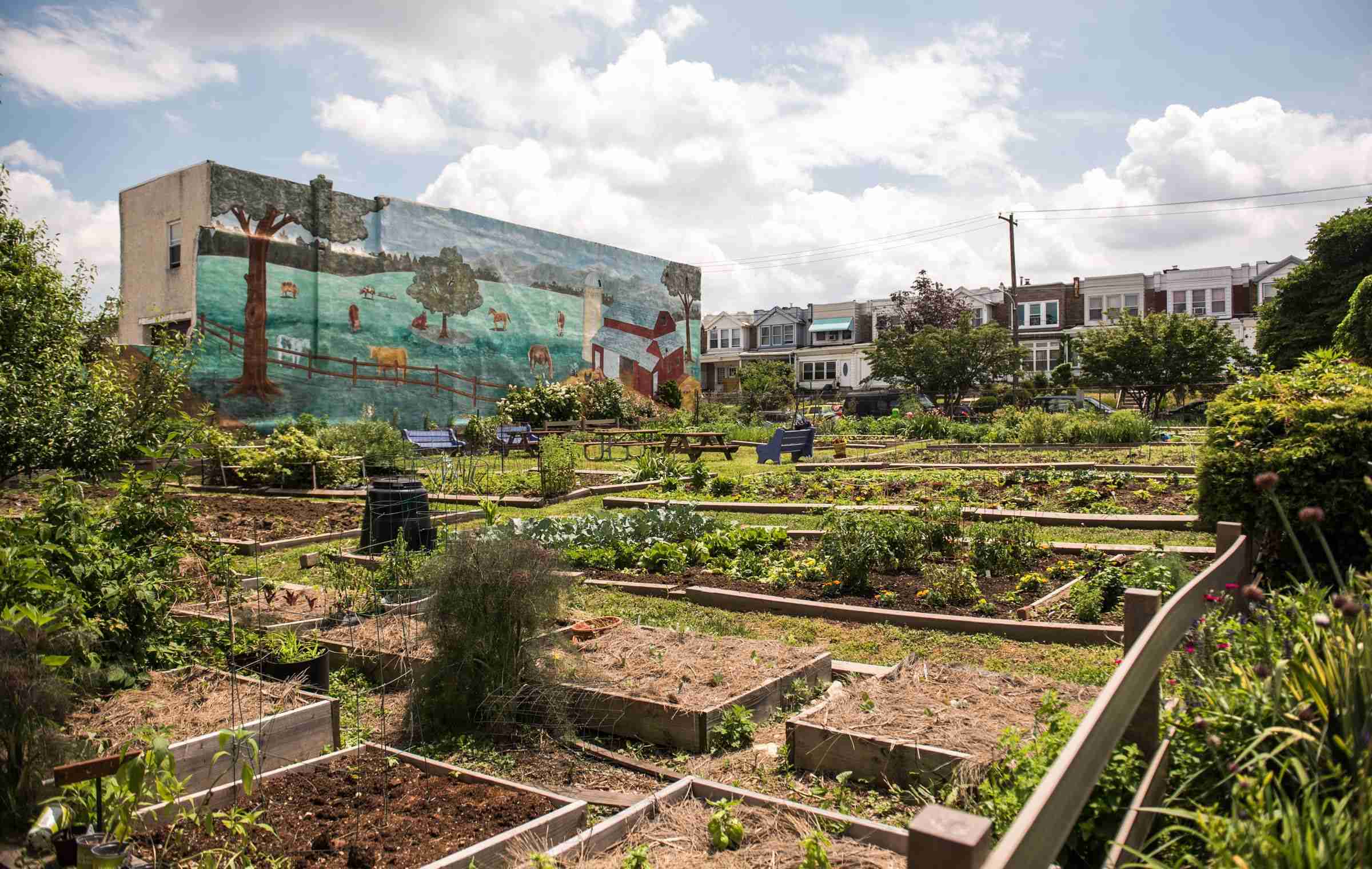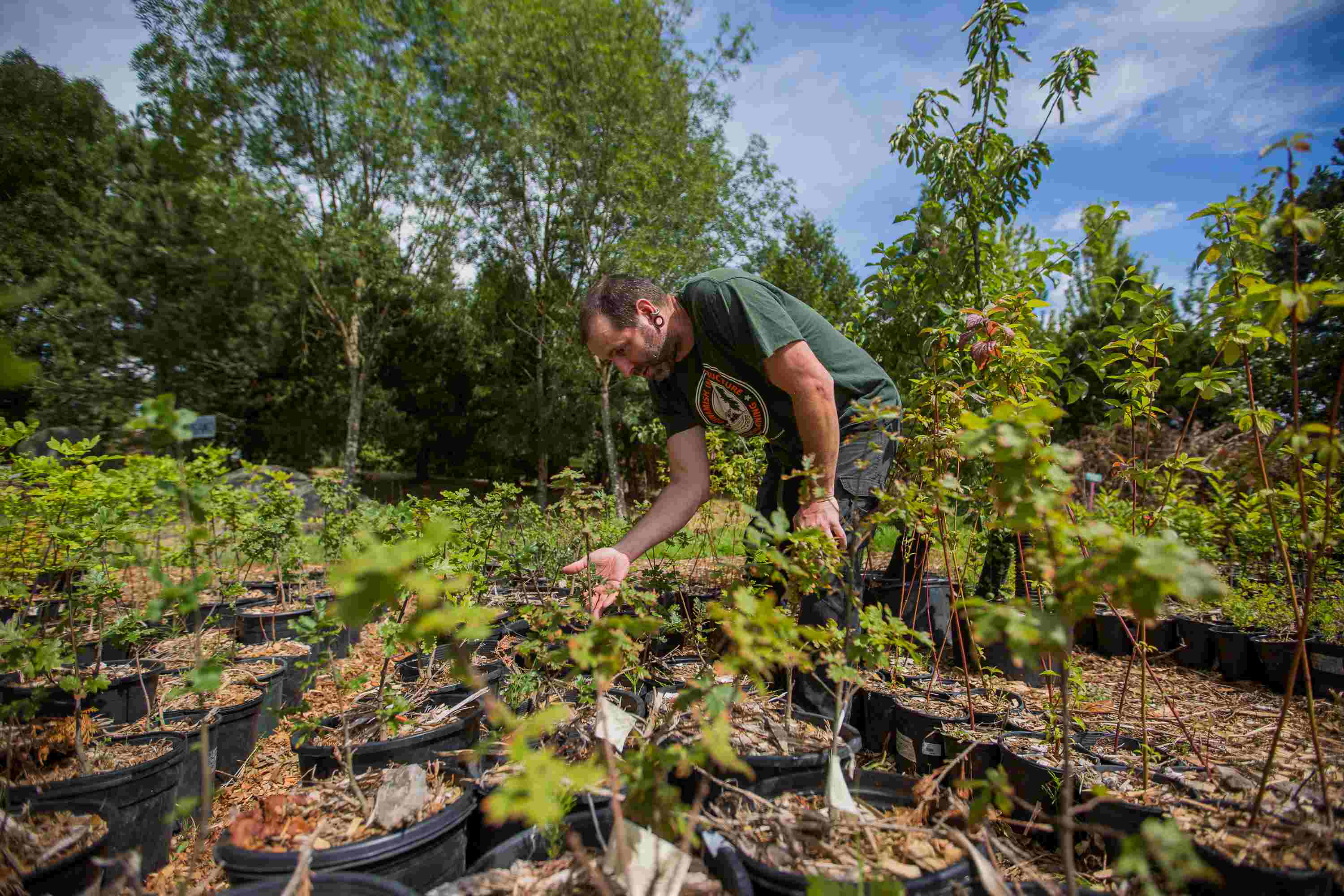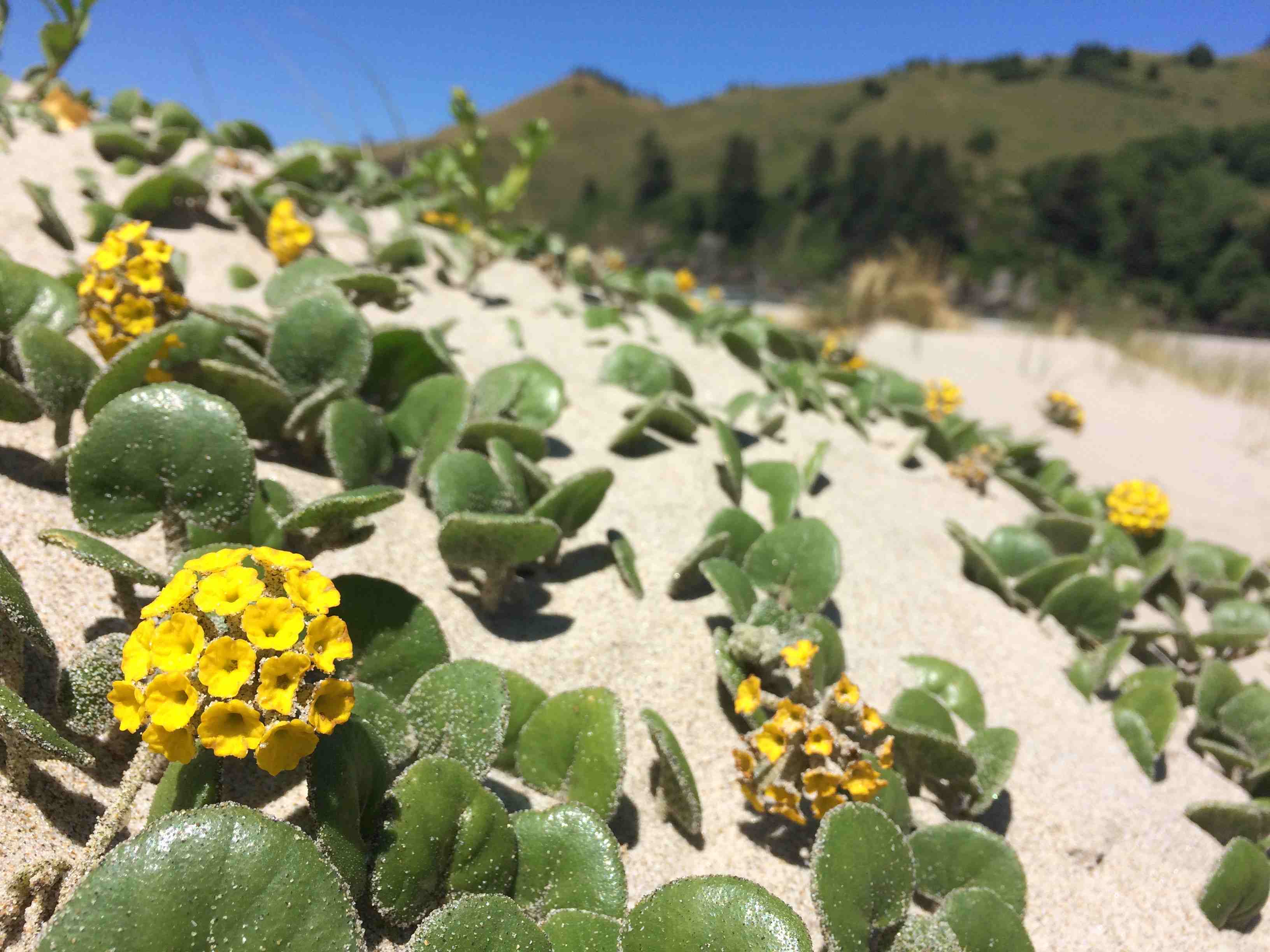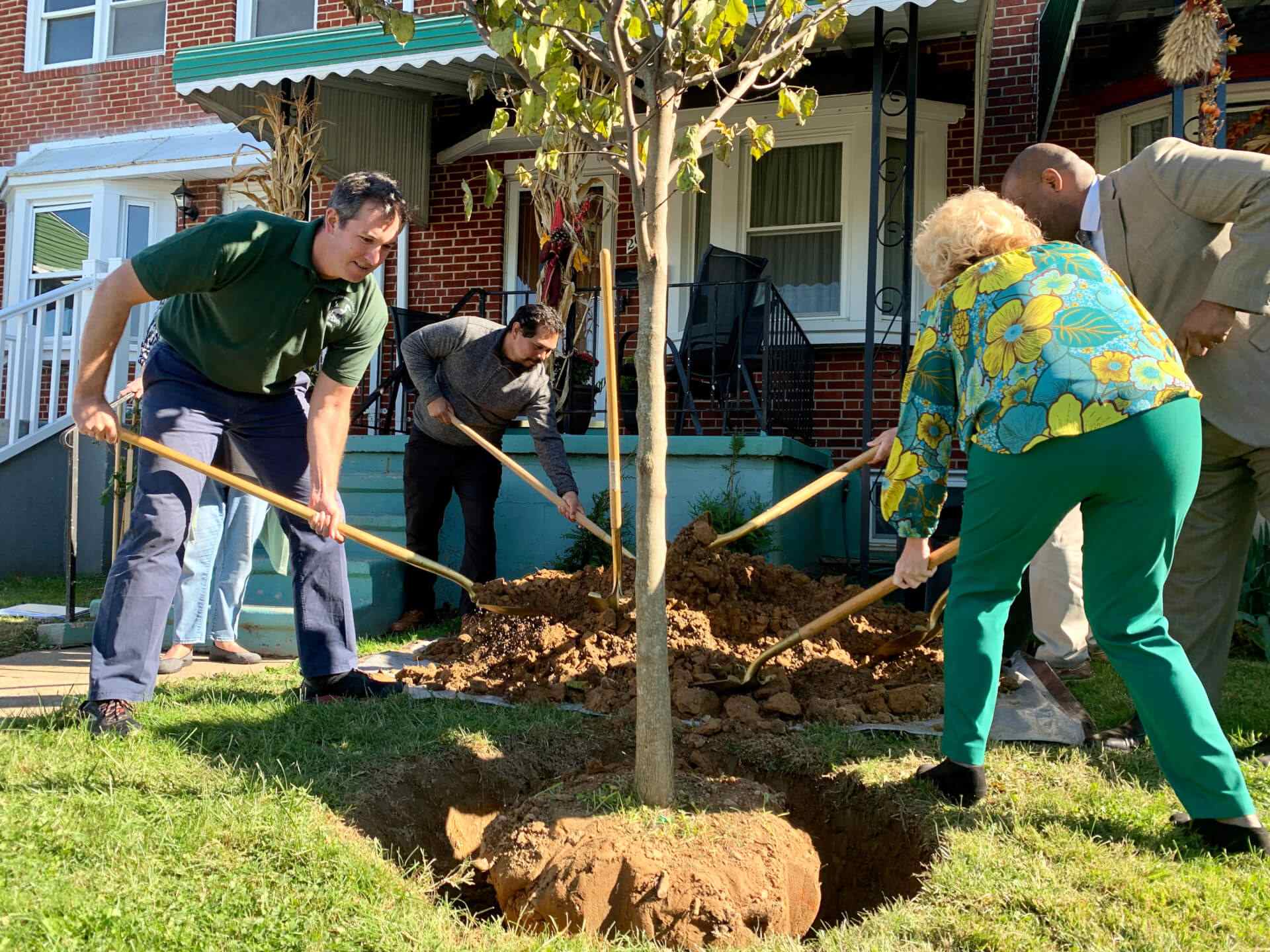Home>Gardening Basics>Understanding Soil>What Zone Is Rhode Island For Planting
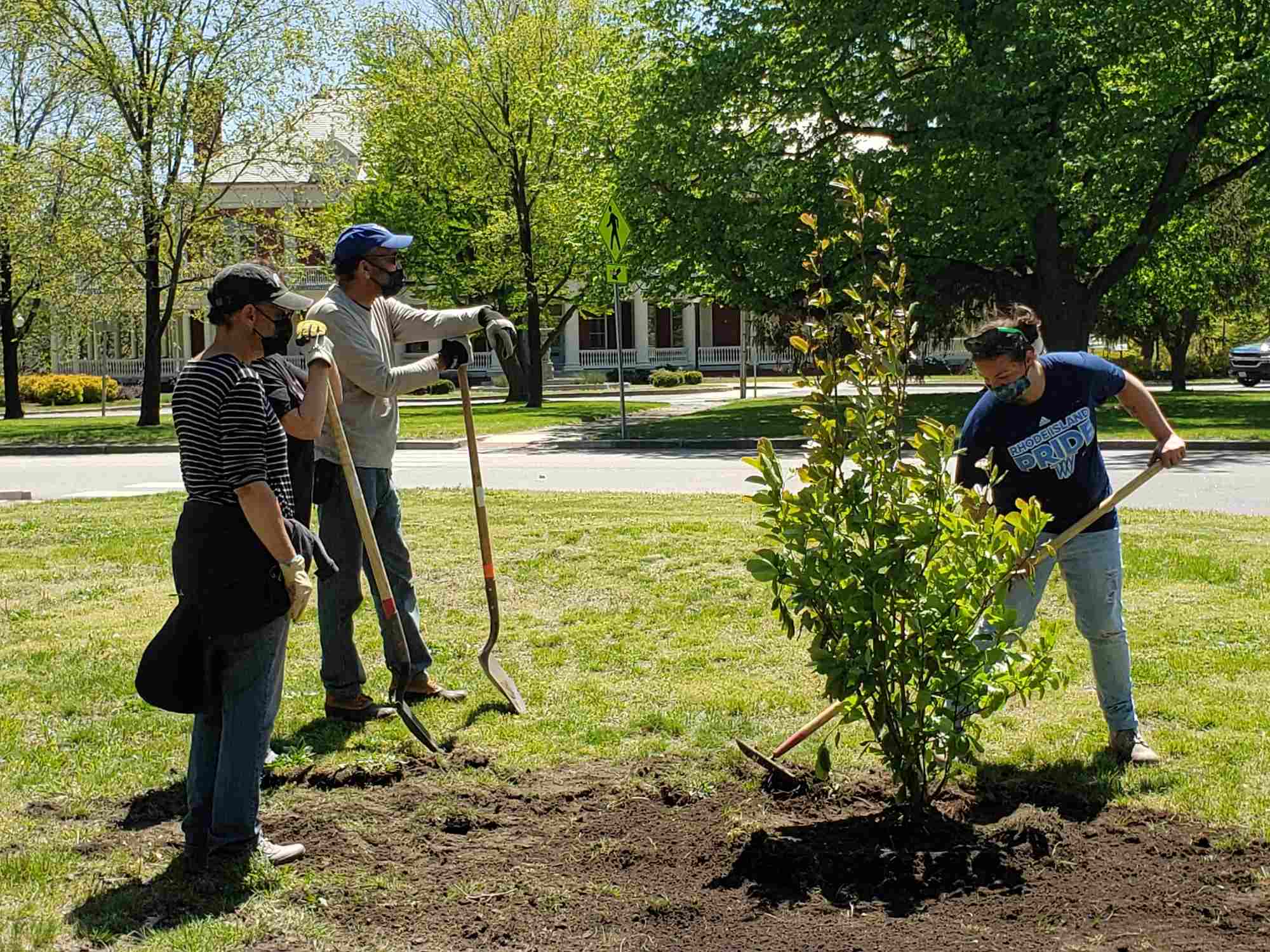

Understanding Soil
What Zone Is Rhode Island For Planting
Modified: January 22, 2024
Learn about understanding soil and what zone is Rhode Island for planting. Discover the ideal conditions for successful gardening and maximize your harvest.
(Many of the links in this article redirect to a specific reviewed product. Your purchase of these products through affiliate links helps to generate commission for Chicagolandgardening.com, at no extra cost. Learn more)
Table of Contents
Introduction
Welcome to the fascinating world of plant hardiness zones! Whether you’re an experienced gardener or just starting out with your green thumb, understanding your local plant hardiness zone is crucial for successful gardening. In this article, we will explore what plant hardiness zones are, how they are determined, and specifically delve into the planting zone for the beautiful state of Rhode Island.
Plant hardiness zones are geographical areas that indicate the specific conditions under which different plants can thrive. These zones are determined based on a variety of factors, including average minimum winter temperatures, frost dates, and climate patterns. By knowing your plant hardiness zone, you can select the right plants that are best suited for your region’s unique climate and growing conditions.
The United States Department of Agriculture (USDA) developed the USDA Plant Hardiness Zone Map, which is widely used to identify and classify plant hardiness zones across the country. This map is divided into multiple zones, each representing a range of minimum temperatures and climatic conditions that plants can tolerate.
Now, let’s focus on Rhode Island specifically. The smallest state in the United States, Rhode Island experiences a varied climate due to its location in the New England region. Its plant hardiness zone is primarily influenced by factors such as its proximity to the Atlantic Ocean, prevailing winds, and its relatively temperate climate.
Rhode Island is predominantly classified as USDA hardiness zone 6a, with some areas in the southern part of the state falling into the milder zone 6b. In zone 6a, the average minimum winter temperature ranges from -10°F to -5°F (-23°C to -21°C), while in zone 6b, it ranges from -5°F to 0°F (-21°C to -18°C). These temperature ranges play a crucial role in determining the types of plants that can thrive and survive in Rhode Island.
As a gardener in Rhode Island, it’s important to consider other factors that may affect the overall gardening experience. These factors include soil composition, rainfall patterns, and the amount of sunlight your garden receives throughout the year. By taking these factors into account along with the plant hardiness zone, you can make informed decisions on what to grow and how to care for your garden.
In the next sections of this article, we will explore specific plants that thrive in Rhode Island’s planting zone, providing you with a helpful guide to create a vibrant and successful garden in this beautiful state.
Understanding Plant Hardiness Zones
Before delving into the specifics of Rhode Island’s planting zone, let’s first understand the concept of plant hardiness zones in general. Plant hardiness zones are geographical regions that are determined based on the average minimum winter temperatures and other climate factors. These zones serve as a guide to help gardeners identify which plants are most likely to thrive in their particular area.
The USDA Plant Hardiness Zone Map is the most commonly used reference for plant hardiness zones in the United States. The map divides the country into multiple zones, each representing a specific temperature range. These zones range from the coldest zone 1a (below -50°F or -45.6°C) to the warmest zone 13b (above 60°F or 15.6°C).
It is important to note that plant hardiness zones are not solely based on low winter temperatures. Other factors, such as humidity, wind patterns, and length of the growing season, also influence a plant’s ability to thrive in a particular area. Understanding the specific requirements of your plant hardiness zone can help you choose the right plants and provide the optimal conditions for their growth.
When selecting plants for a specific zone, it is important to consider their cold hardiness or heat tolerance. Cold-hardy plants are capable of withstanding low temperatures, while heat-tolerant plants can endure high temperatures without damage. Matching the characteristics of plants with the climate conditions of your zone increases the chances of successful and sustainable gardening.
Plant hardiness zones are not static and can change over time. Factors such as climate change, urbanization, and microclimates can influence the boundaries of plant hardiness zones. It is essential to keep track of updates or changes to the plant hardiness zone map to ensure accurate information for your gardening endeavors.
Ultimately, understanding your local plant hardiness zone is the key to selecting appropriate plants and optimizing gardening success. By considering the average minimum winter temperatures and other climate factors, you can create a garden that thrives in your specific zone and enjoy the beauty and abundance of nature right outside your doorstep. Now that we have a better understanding of plant hardiness zones, let’s explore Rhode Island’s unique planting zone in the following section.
What Determines Plant Hardiness Zones?
Plant hardiness zones are determined by a combination of factors that help gauge the suitability of certain plants in specific regions. While the average minimum winter temperature is a primary factor, several other elements contribute to defining the boundaries of plant hardiness zones.
Here are the key factors that determine plant hardiness zones:
- Average Minimum Winter Temperature: The average minimum temperature during the winter months is the most significant factor in classifying plant hardiness zones. This data helps determine the range of temperatures that plants can withstand and thrive in.
- Extreme Minimum Temperature: In addition to the average minimum temperature, the lowest temperature recorded in an area also plays a role. Extreme cold snaps or rare temperature drops can impact plant survival.
- Frost Dates: Plant hardiness zones also consider the last spring frost date and the first fall frost date. These dates indicate how long the growing season will be and help determine the types of plants that can thrive in a specific zone.
- Altitude and Topography: Altitude and topographic features, such as mountains and valleys, can influence local climate conditions. Higher altitudes generally have cooler temperatures, while valleys might experience warmer microclimates.
- Prevailing Winds: Wind patterns can affect plant growth and hardiness. Strong winds can increase the cooling effect on plants, making them more susceptible to cold damage.
It is essential to remember that while these factors play a crucial role, they are not the only determinants of plant hardiness zones. Soil conditions, moisture levels, and other microclimatic factors specific to an area can also impact a plant’s ability to thrive.
The USDA regularly updates the plant hardiness zone map to reflect shifts in climate patterns and scientific understanding. As climate change continues to influence weather patterns, it is necessary to stay updated with the latest version of the map to make well-informed gardening decisions.
Having a solid understanding of the factors that determine plant hardiness zones is vital for selecting suitable plants for your garden. By considering these factors and the specific conditions of your region, you can create a thriving garden that is well-adapted to its environment. Now that we understand how plant hardiness zones are determined let’s explore Rhode Island’s plant hardiness zone in the following section.
The USDA Plant Hardiness Zone Map
The USDA Plant Hardiness Zone Map is a comprehensive and widely used tool for determining plant hardiness zones across the United States. This map, developed by the United States Department of Agriculture (USDA), provides valuable information to gardeners and horticulturists to help them choose the most suitable plants for their specific regions.
The USDA Plant Hardiness Zone Map divides the country into multiple zones based on the average minimum winter temperatures experienced in each region. The map provides a visual representation of the different zones, allowing gardeners to quickly identify their specific plant hardiness zone.
The zones are designated by numbers and letters, ranging from 1a (the coldest zone with an average minimum temperature below -50°F) to 13b (the warmest zone with an average minimum temperature above 60°F).
It is important to note that the USDA Plant Hardiness Zone Map is not solely based on temperature. Other factors, such as soil conditions, rainfall patterns, and humidity levels, are also considered. These additional factors help provide a more accurate and comprehensive picture of a specific region’s climate and its suitability for different plants.
The USDA regularly updates the Plant Hardiness Zone Map to reflect changes in climate patterns. As our climate continues to evolve, it is essential to refer to the most up-to-date version of the map to ensure accurate information for plant selection and gardening decisions.
In addition to the overall zone map, the USDA provides an interactive online tool that allows users to enter their zip code and obtain detailed information about their specific plant hardiness zone. This tool enables gardeners to access localized data and make informed decisions about plant selection.
The USDA Plant Hardiness Zone Map is an invaluable resource for gardeners across the United States. By understanding and utilizing this map, gardeners can choose plants that are well-suited to their specific climate conditions, increasing their chances of gardening success and the beautiful transformation of their outdoor spaces.
Now that we have explored the USDA Plant Hardiness Zone Map, let’s turn our attention to Rhode Island’s specific plant hardiness zone.
Rhode Island’s Plant Hardiness Zone
Rhode Island, the smallest state in the United States, falls within USDA Plant Hardiness Zone 6a, with some areas in the southern part of the state classified as zone 6b. These zones are indicative of the average minimum winter temperatures experienced in the region.
In zone 6a, which covers most of Rhode Island, the average minimum temperature ranges from -10°F to -5°F (-23°C to -21°C). This means that the area experiences cold winters, where temperatures can drop below freezing for extended periods. In zone 6b, found in the southernmost parts of the state, the average minimum temperature is slightly milder, ranging from -5°F to 0°F (-21°C to -18°C).
These temperature ranges play a crucial role in determining which plants can thrive in Rhode Island. It is important to choose plants that can withstand the cold temperatures and occasional frost that occur during the winter months.
However, it is worth noting that Rhode Island’s climate is influenced by its geographical location and other environmental factors. The state is situated along the Atlantic Ocean, which has a moderating effect on its temperatures. As a result, Rhode Island experiences milder winters compared to inland regions at similar latitudes.
Rhode Island’s coastal location also means that it receives cool breezes and increased humidity, which can affect plant growth and health. The ocean proximity also results in a longer growing season compared to more northern regions.
Another factor that affects the plant hardiness zone in Rhode Island is the influence of microclimates. Microclimates are localized pockets within a larger zone that exhibit unique climate characteristics. Factors such as elevation, slope, and proximity to bodies of water can influence microclimates. For example, areas near urban centers or large bodies of water may experience milder temperatures due to the heat absorption and retention properties of urban structures or water bodies. These microclimates can create opportunities to cultivate plants that may be borderline within the overall plant hardiness zone.
Understanding the specific plant hardiness zone for Rhode Island allows gardeners to choose the most suitable plants for their gardens. By selecting plants that can withstand the average minimum temperatures and thrive in Rhode Island’s unique climate conditions, gardeners can create vibrant and successful gardens.
Now that we have explored Rhode Island’s plant hardiness zone, let’s continue by examining the various factors that affect gardening in this region.
Factors Affecting Rhode Island’s Planting Zone
Several factors influence the planting zone in Rhode Island, which ultimately determine the types of plants that can thrive in the region. Understanding these factors can help gardeners make informed decisions and create successful gardens in the state.
Here are some of the key factors that affect Rhode Island’s planting zone:
- Proximity to the Atlantic Ocean: Rhode Island’s coastal location plays a significant role in shaping its climate. The ocean has a moderating effect, keeping temperatures relatively mild compared to inland areas at the same latitudes. This allows for a longer growing season and provides opportunities to cultivate a wider range of plants.
- Prevailing Winds: The prevailing winds that blow off the Atlantic Ocean can impact plant growth in Rhode Island. Strong winds can increase the rate of evaporation and lead to drying out of plants. Additionally, the constant breeze can affect the microclimate of certain areas, making them cooler or windier than others.
- Microclimates: Rhode Island is known for its diverse microclimates. Factors such as elevation, slope, and proximity to bodies of water can create localized variations in temperature, sunlight exposure, and moisture levels. These microclimates result in pockets of unique growing conditions, allowing for the cultivation of a wider range of plants within the state.
- Soil Composition: The composition of the soil in Rhode Island can vary across different regions. Factors such as pH levels, nutrient content, and drainage capacity can impact plant growth. Conducting a soil test and amending the soil accordingly can help optimize growing conditions for specific plants.
- Rainfall Patterns: Rainfall patterns in Rhode Island can vary throughout the year. It is important to consider both the amount of rainfall and the distribution of rainfall when selecting plants. Some plants may be more drought-tolerant, requiring less water, while others may require consistently moist soil.
- Amount of Sunlight: The amount of sunlight received in a particular area of Rhode Island can affect plant growth. Some plants require full sun exposure, while others thrive in partial shade. Understanding the sunlight patterns in different areas of your garden can help determine which plants will flourish in specific locations.
By considering these factors, gardeners in Rhode Island can make informed decisions about plant selection, soil preparation, and garden design. Adapting to the unique climate conditions in the state enhances the chances of success and satisfaction in gardening endeavors.
Now that we have explored the factors affecting Rhode Island’s planting zone, let’s move on to the recommended plants for this region.
Recommended Plants for Rhode Island’s Planting Zone
Rhode Island’s plant hardiness zone of 6a and 6b offers a diverse range of plant choices that can thrive in the region’s climate. Here are some recommended plants that are well-suited to Rhode Island’s planting zone:
1. Perennials:
- Lavender (Lavandula): This fragrant herb thrives in well-draining soil and full sun, making it a perfect addition to Rhode Island gardens.
- Daylilies (Hemerocallis): These hardy perennials are available in a wide range of colors and can withstand a variety of growing conditions.
- Coneflowers (Echinacea): These beautiful flowers are not only gorgeous but also attract pollinators to your garden.
- Hostas (Hosta): With their large, lush foliage, hostas are perfect for adding texture and interest to shaded areas of your garden.
2. Shrubs:
- Forsythia (Forsythia): Known for its bright yellow flowers in early spring, forsythia adds a cheerful burst of color to Rhode Island gardens.
- Hydrangeas (Hydrangea): These versatile shrubs come in various cultivars and offer stunning blooms in shades of pink, blue, and white.
- Lilacs (Syringa): Their intoxicating fragrance and gorgeous blooms make lilacs a favorite in Rhode Island gardens.
- Rhododendrons (Rhododendron): These evergreen shrubs produce magnificent clusters of showy flowers and thrive in shaded areas.
3. Vegetables and Herbs:
- Tomatoes (Solanum lycopersicum): Rhode Island’s warm summers make it an ideal environment for growing a variety of tomato varieties.
- Basil (Ocimum basilicum): An essential herb in many culinary dishes, basil thrives in Rhode Island’s warm weather and can be grown in pots or in the ground.
- Zucchini (Cucurbita pepo): This prolific summer squash grows well in Rhode Island’s climate and can be harvested throughout the summer months.
- Peppers (Capsicum): From sweet bell peppers to fiery chili peppers, there are many pepper varieties that can be successfully grown in Rhode Island.
4. Trees:
- Red Maple (Acer rubrum): Rhode Island’s state tree, the red maple, offers striking fall foliage and is well-suited to the region’s climate.
- Dogwood (Cornus): With their showy flowers and attractive bark, dogwood trees add beauty and interest to Rhode Island landscapes.
- Eastern Red Cedar (Juniperus virginiana): This evergreen tree is well-adapted to Rhode Island’s climate and provides year-round interest.
- Serviceberry (Amelanchier): This small tree offers beautiful white flowers in spring and delicious berries loved by birds and humans alike.
These are just a few examples of the many plants that can thrive in Rhode Island’s planting zone. It’s essential to consider factors like soil type, sunlight exposure, and moisture levels when selecting plants for your garden. Additionally, consulting with local nurseries or gardening experts can provide valuable insights for choosing the best plants for your specific location.
Remember to maintain proper care and maintenance for your plants, including watering, mulching, and fertilizing as needed. With careful selection and attentive care, your Rhode Island garden can blossom into a stunning and vibrant outdoor oasis.
Now that we have explored recommended plants for Rhode Island’s planting zone, let’s conclude this article with a brief recap.
Conclusion
Understanding the plant hardiness zone and the factors that influence it is crucial for successful gardening in Rhode Island. The state’s plant hardiness zone of 6a and 6b, along with its unique environmental factors, presents a range of opportunities for gardeners to create thriving and beautiful gardens.
By selecting plants that are well-suited to Rhode Island’s climate, such as lavender, coneflowers, and hydrangeas, gardeners can enhance the beauty of their landscapes and attract pollinators to their gardens. Additionally, incorporating vegetables and herbs like tomatoes, basil, and zucchini allows for fresh, homegrown produce.
It’s important to consider other factors like soil composition, rainfall patterns, and microclimates when selecting and caring for plants. Proper soil preparation, watering practices, and sunlight exposure are crucial for the health and vitality of your garden.
Consulting with local nurseries, horticulturists, and gardening experts can provide valuable insights and guidance tailored to Rhode Island’s unique conditions. They can offer advice on plant selection, care, and maintenance, ensuring that your garden flourishes year after year.
Remember that gardening is a continuous learning process. Be open to experimentation, learn from your experiences, and adapt your gardening practices accordingly. Embrace the joy and satisfaction that comes from witnessing your garden thrive and evolve over time.
So, roll up your sleeves, grab your gardening tools, and embark on an exciting journey of creating a flourishing garden in Rhode Island’s plant hardiness zone. With careful selection, proper care, and a touch of creativity, you can transform your outdoor space into a vibrant oasis of beauty and tranquility.




